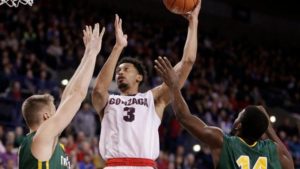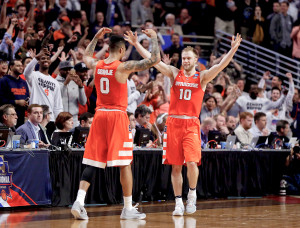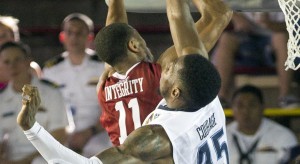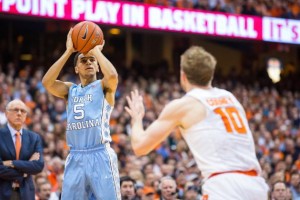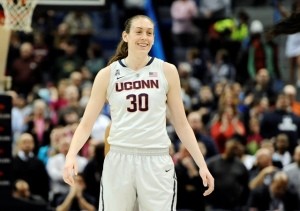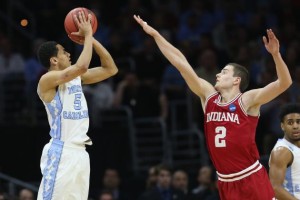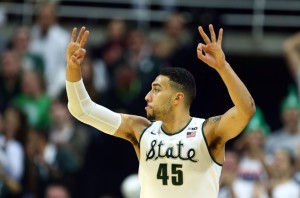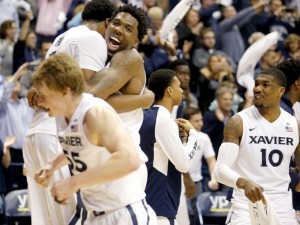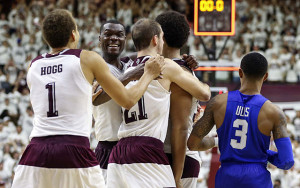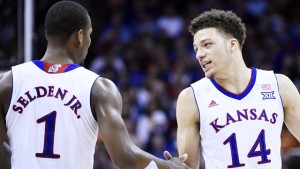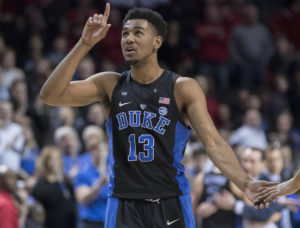
The bracket for the NCAA Tournament was revealed on Sunday, which means it’s that time again. By Thursday, roughly 40 million Americans will have filled out about 70 million brackets only to have most of them be destroyed by the weekend because of upsets, injuries, and chaotic, beautiful madness.
Let’s take a look at some things as we head into the tournament. Madness is upon us. It’s the most wonderful time of the year.
Picking Oregon In Your Bracket? Duck.
Heading into last weekend, Oregon was considered one of the top teams in the country and a serious threat to go to the Final Four in Glendale, Arizona. After all, the Ducks made it all the way to the Elite Eight last season and looked like one of the most complete teams in college basketball for most of the season.
Unfortunately, star forward Chris Boucher went down in the team’s Pac-12 Tournament semifinal win over Cal. At 6’10”, Boucher gave the Ducks serious length and the ability to stretch the floor offensively. He was also Oregon’s third-leading rebounder and, most importantly, a senior leader on a fairly young, albeit experienced, squad.
Assuming the Ducks are through to the Sweet 16, they would likely play either Michigan (the hottest team in college basketball) or Louisville (a big, tall matchup nightmare given Boucher’s injury). Oregon was a Final Four-caliber team with Boucher. Without him, they become rather ordinary.
Duke’s Difficult Draw
Aside from Michigan’s resurgence, the biggest story of last weekend in college basketball was Duke’s run at the ACC Tournament. The Blue Devils, led by Freshman Jayson Tatum and Sophomore Luke Kennard, defeated Clemson, Louisville, North Carolina, and Notre Dame last week. More impressively, they beat those four teams in as many days. One would figure that for their troubles, as well as their twelve RPI top 50 wins (tied for the most in the country), the Dukies would get a favorable draw in their region.
Not so.
Instead, the Blue Devils are the 2-seed in the East region, which means they would likely have to go through Villanova to get to the Final Four. Better yet, a potential Sweet Sixteen matchup with SMU looms, and the Mustangs, one of the most well-rounded teams in the country, are more like a 3-seed hidden on the six-line. In the second round, the Blue Devils face a potential matchup with South Carolina in a game that will be played in Greenville, South Carolina (that seems fair).
If Duke survives all of this, they may never lose a basketball game ever again. The more realistic scenario is that they don’t. Well done, selection committee.
A Mid-Major Sleeper
If I told you there was a team on the 12 or 13-seed lines that could easily win a game in the Tournament, you wouldn’t be too surprised. Your first thought would be of Middle Tennessee State and their terrifying trio of JaCorey Williams, Giddy Potts, and Reggie Upshaw. I do think Middle Tennessee can go on a run, but I’ll give you another team that could wreck your bracket this weekend:
East Tennessee State.
The Buccaneers play Florida in their first-round game Thursday afternoon in Orlando. Florida is a difficult draw, but consider that, since losing starting center John Egbunu on February 14, the Gators are just 3-3 with two losses to Vanderbilt. East Tennessee State boasts one of the best point guards in the country in senior T.J. Cromer, who makes three three-pointers per game and averages just over nineteen points per game. Florida is one of the top defensive teams in the country, but the Nigerian-born Egbunu was a valuable rim protector who has not been easy to replace.
If Cromer is able to get to the rim, and the Buccaneers are making shots from the outside, it could be a quick March stay for the Gators.
Give Purdue One More Chance
Last season, Purdue lost to Arkansas-Little Rock on the first day of the NCAA Tournament. The year before, they lost to Cincinnati… on the first day of the NCAA Tournament. One can understand why patience might be running thin with this group. However, let me talk you into the Boilermakers for this year’s tournament.
First of all, the team has star big man Caleb “Biggie” Swanigan, the likely Big Ten Player of the Year and one of the best players in the country. Swanigan averages 18.5 points, nearly 13 rebounds per game, and shoots 43% from the outside. He figures to be a total matchup nightmare for just about whoever plays Purdue in the tournament.
The difference between last year’s Purdue team and this one, though, is guard play. Junior Dakota Mathias has paced the squad and Carsen Edwards has been very solid at shooting guard. This season, Purdue ranks third in the country in assists per game and has a 1.38 assist-to-turnover ratio. The Boilers also rank in the top five in the country in three-point shooting. Bottom-line: Purdue is one of the most well-rounded teams in the country and can beat anyone in the field of 68.
And there’s nothing they can’t do when Biggie is hypnotizing his opponents. True story: I have Purdue coming out of the Midwest region. I really believe they’re that good.
But….
This One’s For North Carolina
Yes, the Tar Heels looked very vulnerable in the ACC Tournament and have their fair share of flaws. But North Carolina is the most complete team in this tournament, and even though they’ve been far from perfect this season, they’re my pick to cut down the nets in Glendale on April 3. Every contender in this year’s field scares me to a certain extent, and this includes the Heels. But they don’t scare me nearly as much as some other top teams, and at some point, experience must factor into the equation, as well.
I’m picking North Carolina to defeat Gonzaga in the championship game, and I’m not looking back.
Agree? Disagree? Leave a comment below!

